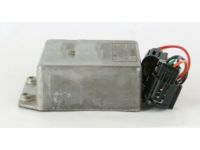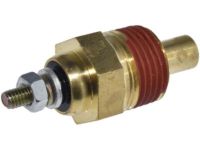- Live Chat
- 1-888-788-9341


Why choose FordPartsGiant
- Devoted Service
At FordPartsGiant.com, we strive to make customer satisfaction our #1 goal by providing dedicated customer service. Our core values of success continue to demonstrate our loyalty by building dedicated relationships with all of our current and future customers. We are always ready to assist you with the slightest detail about your vehicle's parts and accessories.
- Reasonable Prices
We are the best online source for discounted prices on factory auto parts and accessories. Not everyone has the money to buy their vehicle quality parts, here at FordPartsGiant.com we make it economical to buy the best parts without sacrificing the quality or hurting your wallet.
- Swift Delivery
FordPartsGiant.com has centrally located distribution centers all across the United States. This gives you quick access to our discounted Ford Bronco II parts when you need them. We offer our customers the convenience of having parts delivered straight to their front door. We are committed to having your vehicle up and running in just a couple of days.
Popular Genuine Ford Bronco II Parts
- Engine Parts View More >
- Lamps & Wiring Parts View More >
- Wheels & Brakes Parts View More >
- Fuel System & Manifolds Parts View More >
- Speedometer, Bumpers, Mirrors & Wipers Parts View More >
- Radiator & Grill Parts View More >
- Transmission Parts View More >
- Suspension & Steering Parts View More >
- Air Conditioner, Radio & Shock Absorbers Parts View More >
- Frame, Exhaust System & Springs Parts View More >
- Door glass and fittings Parts View More >
Shop Genuine Ford Bronco II Parts with FordPartsGiant.com
The Ford Bronco II, a compact SUV inspired by Ford's pickup truck design, was produced and sold by the renowned American manufacturer between 1984 and 1990. Created to compete with other three-door SUVs entering the market, the Bronco II was assembled at the Louisville Assembly Plant in Kentucky. Benefiting from a design that was nearly a foot shorter than its rivals, the model utilized the pickup's chassis for cost-effective production. Initially, all Bronco II models came with four-wheel drive until 1986, when rear-wheel drive versions with a sealed or capped transfer case were introduced. Airbags were also incorporated for added safety. Under the hood, the 1984 and 1985 models were powered by a German-built, carbureted 2.8 L Cologne V6 engine, generating 115 hp at 4600 rpm. In 1986, Ford introduced a more potent fuel-injected 2.9 L Cologne V6 engine, capable of 140 hp. A Mitsubishi 2.3 L turbodiesel four-cylinder engine was also offered optionally in 1986 and 1987, but it didn't garner much acclaim. The Bronco II, with its 94.0-inch wheelbase, ceased production in February 1990, making way for another light truck model from Ford.
The Ford Bronco II, notably the 1987 and 1988 models fitted with a 2.9L engine, often displays two predominant issues: a rough idle at start and consistent stalling at idle. Upon ignition, there's typically a rough start, with the need to press the accelerator to maintain idle. This RPM fluctuation, moving between 500 to 1000, can lead to stalling, especially when stationary. Despite the replacement of various components like fuel filters, fuel pumps, air filters, O2 sensors, and spark plugs, the rough idle continues. Suggested solutions include checking for error codes (as older models might not always activate the Check Engine Light), inspecting and cleaning the Idle Air Control (IAC) valve, examining the upper intake for dirt accumulation, and scrutinizing the fuel pressure regulator for gasoline presence in the vacuum line or oil, hinting at regulator issues. Further, the Throttle Position Sensor (TPS) should be evaluated for potential anomalies. Some vehicles, even after these interventions, still exhibit idling irregularities, sounding similar to a camshaft by the exhaust, and show a reluctance to rev beyond 3,000 RPM, particularly uphill. Potential solutions for these persistent challenges include assessing the oil pump, verifying computer codes, analyzing sensors like the ICA and MAP, recalibrating the TPS, revisiting ignition timing, and ensuring the exhaust system's clarity. The 1987 model, equipped with a 2.9 V6 fuel-injected engine, often faces a challenge in transitioning from drive to park, causing RPMs to drop, which may result in stalling. These symptoms might be attributed to potential vacuum leaks, with findings of disconnected vacuum hoses providing evidence. If the RPM dip is pronounced when braking, the power brake booster could be the source of the vacuum leak. The IAC valve, central to regulating idle RPMs, is vital in these situations. When functioning correctly, the IAC should ensure a steady startup and consistent RPM, and cleaning or replacing a malfunctioning one can resolve the issue. The 1990 model, despite its 76k original miles, can stall after about 25-30 minutes of operation. The "check engine" light usually comes on around 20 minutes before the stall. This model's base idle is often higher than advised, hovering around 1000-1,100 RPM. The root causes behind this stalling could be a malfunctioning MAP sensor or the ECM. In the case of the 1988 model, stalling can occur either upon startup or when shifted into reverse. Concerns include potential timing misalignments and distinct gasoline odors during refueling, which might indicate obstructions in the fuel line or over-rich fuel conditions. Recommendations encompass checking or replacing parts like the Air Charge Temp Sensor, oxygen sensors, TPS, IACV valve, and coolant temp sensor. A faulty fuel pressure regulator might lead to elevated fuel pressure, producing an exhaust odor, indicative of an over-rich fuel mixture. Addressing timing discrepancies might necessitate disconnecting a jumper near the intake manifold's fuel rail.
In terms of quality and longevity, OEM parts are top-tier. This is because they are made according to Ford's demanding factory specifications and go through strict quality control. When you need any OEM Ford Bronco II parts, like Body, our website should be your first option. We own a huge range of Ford Bronco II parts at unbelievable prices. We have strict requirements on quality, so every genuine part comes with a manufacturer's warranty. Our customers' 100% satisfaction is our guidance.
Ford Bronco II Parts Questions & Answers
- Q: How to remove and install the ICM in a Ford Bronco II?A: The negative battery cable must be disconnected. One has to detach the wiring harness connector(s) from the ICM. The ICM should be removed by taking out the mounting bolts. To reinstall, put the ICM into position and mount it using the bolts. Tighten the bolts to 22-31 inch lbs. Attach the wiring harness connector(s) to the ICM. Connect negative battery cable.
- Q: How do you remove door mounted speakers and body mounted rear speakers on Ford Bronco II?A: Remove the door trim panel to remove door mounted speakers. Next, remove the lour speaker attaching screws. Pull the speaker out from the door frame and disconnect the wire harness plug. Installation is the reverse of the removal procedure. For body mounted rear speakers on Ranger models, remove the four speaker grille attaching screws and remove the grille. On Bronco II models, gently pry the speaker grille from the trim panel. On SuperCab models, remove the four speaker mounting screws. Pull the speaker out from the trim panel and disconnect the wire harness plug. Installation is the reverse of the removal procedure.
- Q: How to remove and install the engine coolant temperature sensor on Ford Bronco II?A: The engine coolant temperature sensor measures the temperature of the coolant and provides a signal to the PCM. When testing, disengage the wiring harness from this component and use an ohmmeter to measure its resistance. Enumerate readings obtained at both cold and hot states of the coolant on a graph. Replace it if they do not correlate with it. To remove or reinstall this part, first drain the coolant, then disconnect the battery and take off the sensor before reinstalling it again. Check for leakages after refilling it, add back water and start your car.



















































